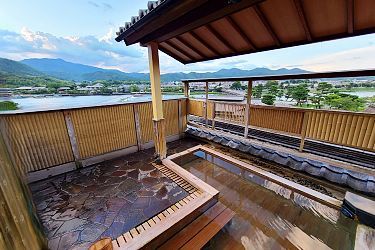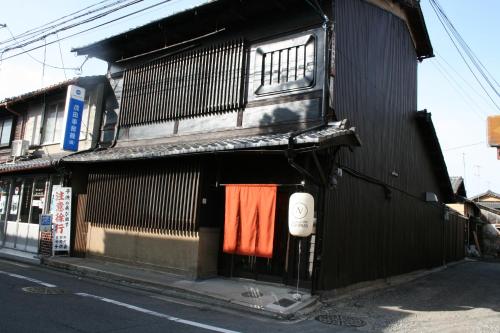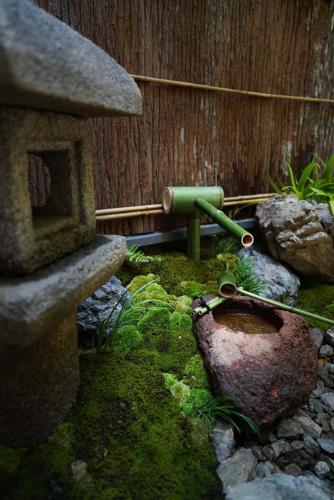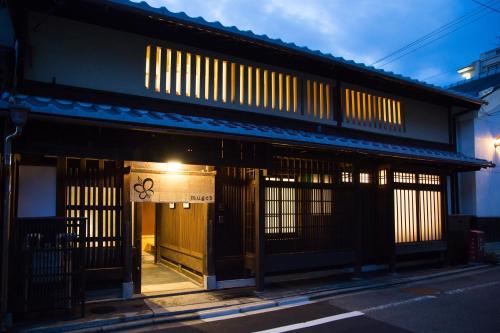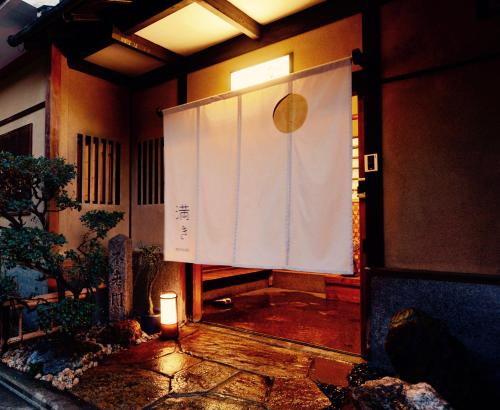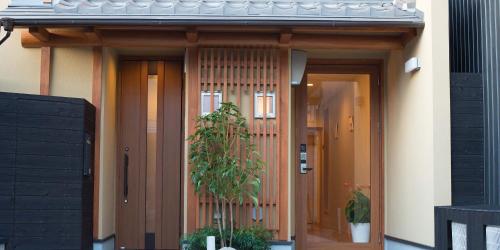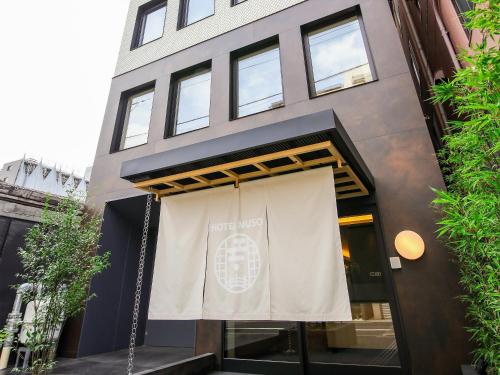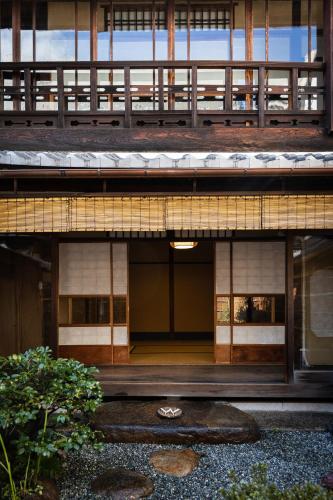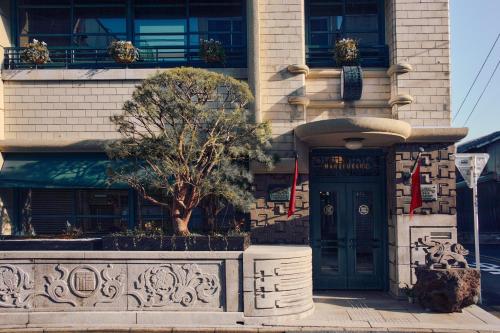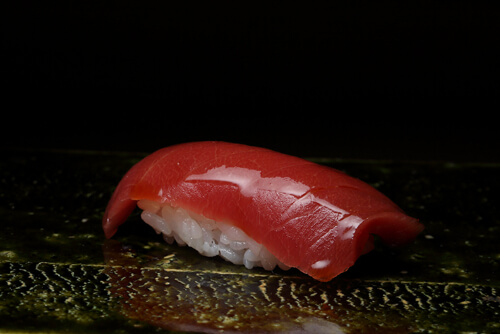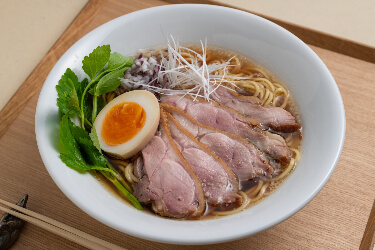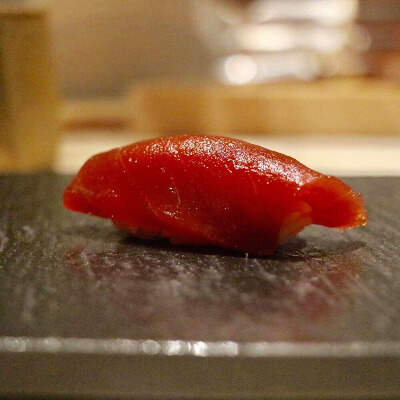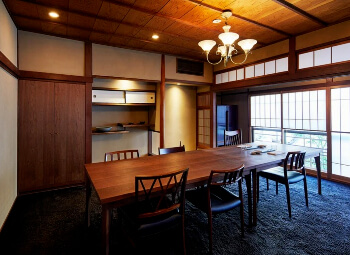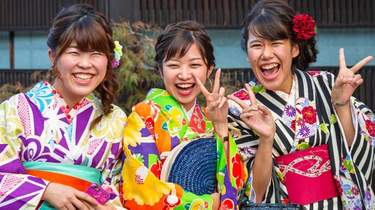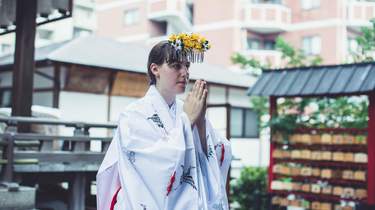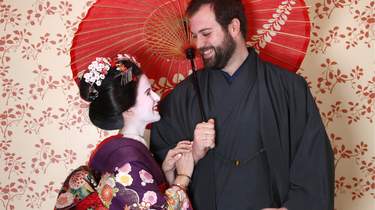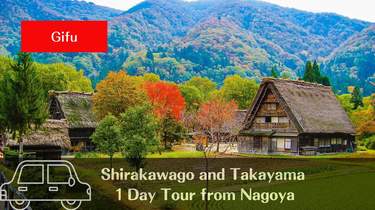- Direct
- 60 min
- ¥1,340
- every 30 minutes
Direct airport buses connect Itami Airport with Kyoto Station. The one way journey takes about one hour and costs 1340 yen.
Direct airport buses connect Itami Airport with Kyoto Station. The one way journey takes about one hour and costs 1340 yen.
Take the Osaka Monorail from Itami Airport (Osaka Airport Station) for just one station to Hotarugaike Station (2 minutes, 200 yen) and transfer to the Hankyu Takarazuka Line for Juso Station. At Juso Station, transfer to the Hankyu Kyoto Line for central Kyoto, such as Kyoto-Kawaramachi Station (55 minutes, 480 yen from Hotarugaike Station).
Take the Osaka Monorail from Itami Airport (Osaka Airport Station) for just one station to Hotarugaike (2 minutes, 200 yen) and transfer to the Hankyu Takarazuka Line for Osaka-Umeda Station (15-20 minutes, 240 yen). Then, take the JR Kyoto Line from nearby JR Osaka Station to Kyoto (30 minutes, 580 yen). The total fare for Japan Rail Pass holders is only 440 yen.
Above fees and schedules are subject to change. Be sure to check current yen exchange rates.
Kyoto features a rectangular street system. Unlike the streets in other Japanese cities, most of central Kyoto's streets are named. The main streets running from east to west are numbered in ascending order from north to south, and are about 500 meters apart from each other, with several smaller streets in between. For example, Shijo means "4th Avenue" and Nijo means "2nd Avenue".
Kyoto's city center with the highest concentration of dining, shopping and entertainment opportunities, is located around the junction of Shijo-dori (4th Avenue) and Kawaramachi-dori (Kawaramachi Street). JR Kyoto Station is located south of the city center at the height of Hachijo-dori (8th Avenue).
The most prominent north-south street is Karasuma-dori (Karasuma Street), which runs from Kyoto Station via the city center to Kyoto Imperial Palace. Another north-south axis is Kamo River, about one kilometer east of Karasuma-dori.
Kyoto has a rather inadequately developed public transportation system for a city of its size, consisting of two subway lines, a dense bus network and several railway companies, whose lines are not always conveniently connected with each other. Taxis and bicycles can be worthwhile alternatives.
The recommended way to get around Kyoto by public transportation is to use an IC card, such as Icoca, which is accepted on virtually all trains and buses in the city. Alternatively, travelers intending to use buses or subways extensively, should consider one of the 1-day passes available. See the ticket section below for more details.
Below is a simplified map of the railway and subway lines of Kyoto:
Few of Kyoto's tourist attractions are located close to subway or train stations. Instead, Kyoto has a dense bus network with direct bus lines from Kyoto Station and/or the city center around Shijo-dori and Kawaramachi-dori to most major sights.
Kyoto is served by multiple bus companies. For central Kyoto, the green Kyoto City Bus buses are most numerous and useful. The red buses by Kyoto Bus are second most prominent and tend to be convenient to access sights in more outlying areas of the city.
The tourist offices provide a useful English network map for the Kyoto City Buses, which makes it quite easy for foreign visitors to access tourist attractions by bus. Despite the good map and English displays and announcements, however, getting off at the correct bus stop can still be stressful, especially in crowded buses.
Because buses are small and operate surprisingly infrequently even on some major routes, buses to major tourist sights can often get crowded, especially on weekends. In addition, much time can be lost when buses get stuck in the busy street traffic. Consequently, it is recommended to use subways and trains as much as possible, and use buses only for shorter distances, for example, from the closest subway station to the destination.
Large pieces of luggage should not be brought onto city buses. Use taxis and delivery services instead when you need to travel with larger suitcases.
Most buses are entered through the back door and left through the front door. The fare has to be paid when leaving the bus. Inside much of central Kyoto, there is a flat rate of 230 yen per ride. Outside the flat fare zone, the fare increases with the distance. Click here for more information on riding buses.
There are two subway lines in Kyoto, the Karasuma Line which runs from south to north along Karasuma-dori and stops at JR Kyoto Station, and the newer Tozai Line which runs from east to west and meets the Karasuma Line at the intersection of Karasuma-dori and Oike-dori.
All JR lines, including the Tokaido Shinkansen, pass through or commence at JR Kyoto Station. JR trains can be a convenient for accessing the Arashiyama area (JR Sagano Line) and some attractions in southern Kyoto along the JR Nara Line, e.g. Fushimi Inari Shrine and Uji.
The Sky Hop Bus is an expensive but convenient way to visit Kyoto's most famous sightseeing spots. Double-decker buses with an open-air second floor run clockwise every hour from Kyoto Station in a large circle around the city, stopping near major tourist sites along the way, including Nijo Castle, Kinkakuji, the Imperial Palace, Heian Shrine and Kiyomizudera. A 1-day pass costs 4000 yen and a 2-day pass costs 6000 yen and can be purchased through Klook.
Kyoto is probably the Japanese city with the highest concentration of taxis. Especially in the city center, taxis are found everywhere. Taxis can not only be a more comfortable, but also an economical alternative to buses on short to medium distances for groups of three or more.
Most taxis accommodate up to four passengers (not including the driver), while larger vehicles are able to accommodate an additional fifth passenger. The rate starts around 500 yen for the first kilometer and increases by 100 yen for every additional 250-300 meters traveled.
Kyoto City's simple layout and flat terrain make it easy and convenient to explore by bicycle. Numerous bicycle rental outlets can be found around the city, especially around major stations, such as Kyoto Station or in popular biking areas like Arashiyama. Typical rental prices are around 1000-1500 yen per day for basic bicycles and around 1700-2500 yen for electric assist bicycles. Some lodgings may provide their guests with bicycles for a small fee or for free.
Kyoto is generally a bicycle-friendly city with relatively easily navigable roads and a handful of cycling routes, most notably along Kamo River. Designated bicycle parking is often freely available around popular sightseeing spots. The situation is a little bit more challenging in the city center due to congested roads, crowded sidewalks and a lack of designated parking areas. Also, distances to some of the more outlying sightseeing spots should not be underestimated. For example, it is about eight kilometers (typically a 45-75 minute ride) from Kyoto Station to Kinkakuji or about ten kilometers to Arashiyama.
See also our separate page about the various passes available for the Kansai Region.
The prepaid IC card available in Kyoto is called Icoca. It does not give you any discounts over regular tickets, but it makes the process of taking trains and buses easier, as you do not always need to buy a ticket for each ride. Icoca cards can be purchased through ticket machines at JR stations. Local non-JR railway companies offer their own IC card called Pitapa; however, Pitapa is a postpaid card that works more like a credit card and is targeted at residents.
Icoca and Pitapa can be used on virtually all trains and buses in and around Kyoto (and most other major cities in Japan). Additionally, eight other IC cards from other major cities of Japan can also be used on the trains and buses of Greater Osaka and Kyoto, including Suica, Pasmo, Kitaca, Toica, Manaca, Sugoca, Nimoca and Hayakaken.
The Kansai One Pass is a special version of Icoca exclusively for foreign tourists that additionally qualifies for discounts at various attractions in the Kansai Region. It is available for sale at Kansai Airport and major railway stations in the Kansai Region.
Furthermore, the following one day passes are available for Kyoto:
Questions? Ask in our forum.



